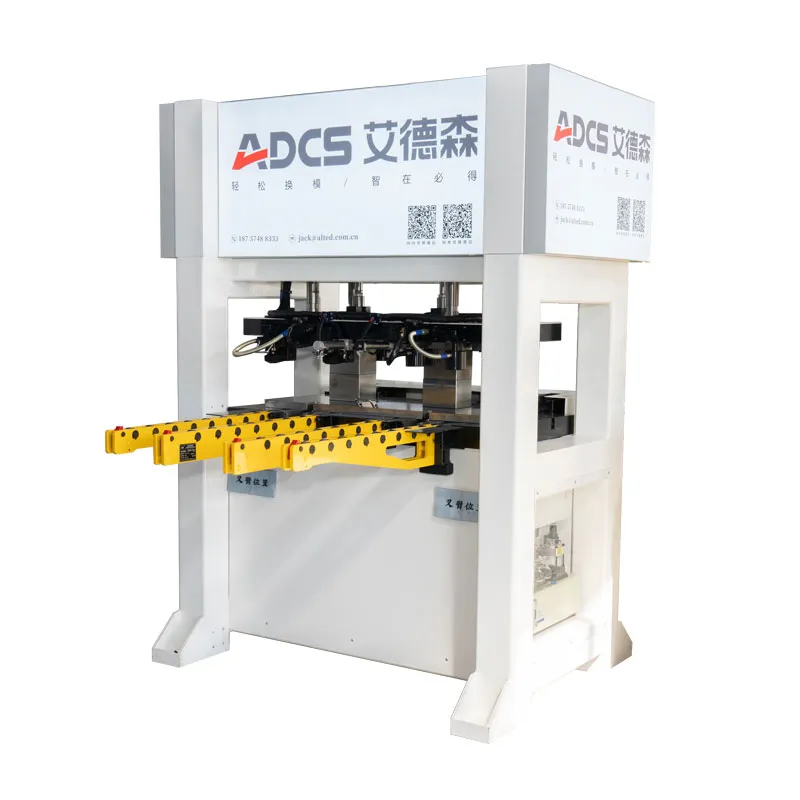What is a Quick Die Change System and How Can It Improve Your Manufacturing Process
2024-11-06
In the world of manufacturing, efficiency, flexibility, and speed are essential factors in achieving high productivity and reducing downtime. One innovation that has revolutionized many production lines is the Quick Die Change System (QDCS). By reducing the time needed for die changes and increasing overall equipment effectiveness (OEE), QDCS is transforming how manufacturers approach production. In this post, we’ll break down what a Quick Die Change System is, how it works, and the significant benefits it offers to modern manufacturing processes.
What is a Quick Die Change System?
A Quick Die Change System (QDCS) is an advanced mechanism designed to reduce the time and effort required to change dies on production equipment, such as presses, stamping machines, and injection molding machines. Traditionally, changing dies can be a time-consuming and labor-intensive process, often taking hours and resulting in long production downtimes. The QDCS optimizes this process by incorporating tools, technologies, and processes that allow operators to switch dies more quickly, safely, and efficiently.
The system typically involves a combination of modular die-changing tools, hydraulic or pneumatic systems, specialized equipment, and ergonomic enhancements that make the process faster and more precise. Depending on the design, QDCS may also feature automatic die-changing capabilities that minimize human intervention.
Key Components of a Quick Die Change System
1. Modular Die Handling Equipment
This includes quick-release clamps, hydraulic lifting devices, and specialized carts that help move and position dies accurately without the need for heavy lifting or complex maneuvers. These systems are typically designed to handle dies of varying sizes and weights, reducing the manual labor required.
2. Automated Die Clamping and Unclamping Mechanisms
The clamping mechanism is a crucial part of the QDCS. It enables easy, quick, and safe mounting and removal of dies without the need for extensive manual adjustments or tools. Pneumatic or hydraulic systems are often used to operate these clamps, ensuring that the dies are securely fastened during operation and can be easily detached when it’s time for a change.
3. Ergonomic Tools
Ergonomics is a significant consideration in QDCS design, as die changes can be physically demanding. The system incorporates lifts, slides, and mechanical arms to reduce manual labor, minimizing the risk of injury and fatigue while improving the overall speed and ease of operation.
4. Die Storage and Transportation Systems
For maximum efficiency, QDCS is often paired with die storage and transportation solutions that help organize, store, and quickly access dies between production runs. These systems can be customized to fit the specific needs of the factory, allowing for quick retrieval and optimal use of available die sets.
Benefits of Quick Die Change System
1. Reduced Downtime
The primary advantage of a QDCS is its ability to drastically reduce the time it takes to change dies. Traditional die changes can take anywhere from 30 minutes to several hours, whereas QDCS can cut that time down to just minutes. This reduction in downtime leads to more productive machine time, meaning you can increase the number of parts produced during a given shift.
2. Improved Flexibility
In industries where frequent die changes are required—such as in the automotive or metal stamping sectors—being able to switch dies quickly allows manufacturers to handle a greater variety of parts and meet shifting customer demands. This adaptability makes QDCS a valuable asset for companies with high-mix, low-volume production lines.
3. Higher Equipment Utilization
By reducing the time spent on manual die changes, QDCS helps improve the overall utilization of machines and presses. Equipment that was previously sitting idle during long setup times can now be used more effectively, leading to higher return on investment (ROI) and greater operational efficiency.
4. Enhanced Safety
The quick-change process reduces human intervention and minimizes the risk of accidents that can occur during manual die handling. With automated or semi-automated systems, workers are less likely to be exposed to the hazards associated with traditional die-changing methods, leading to a safer working environment.
5. Cost Savings
Less downtime means more production and fewer delays. As a result, manufacturers can see significant cost savings over time due to increased throughput, higher efficiency, and reduced labor costs. Moreover, the longevity of the machinery is extended as it operates more efficiently.
6. Improved Quality Control
Faster die changes can also contribute to better product quality. With reduced machine downtime, there is less variation in production rates, and the machinery can operate at a more consistent pace. This consistency contributes to higher-quality products and fewer defects.
Applications of QDCS
- Automotive Industry: The automotive industry often requires frequent die changes for different vehicle parts. A QDCS is perfect for reducing downtime and improving the efficiency of stamping presses used to make various automotive components.
- Metal Stamping and Die Casting: Manufacturers of metal parts and components benefit greatly from QDCS as it speeds up production while maintaining precision in the die-changing process.
- Injection Molding: QDCS is commonly used in injection molding processes where quick mold changes are necessary to accommodate different product designs.
- Consumer Goods Manufacturing: Companies producing a wide range of consumer products—such as electronics, packaging, and appliances—can use QDCS to handle frequent tool changes.
A Quick Die Change System (QDCS) is a game-changer in modern manufacturing environments. By streamlining the die-changing process, manufacturers can reduce downtime, improve safety, increase equipment utilization, and achieve significant cost savings. Whether you are working in automotive manufacturing, metal stamping, or injection molding, implementing a QDCS can provide your production line with the flexibility and efficiency needed to stay competitive in today’s fast-paced market.



